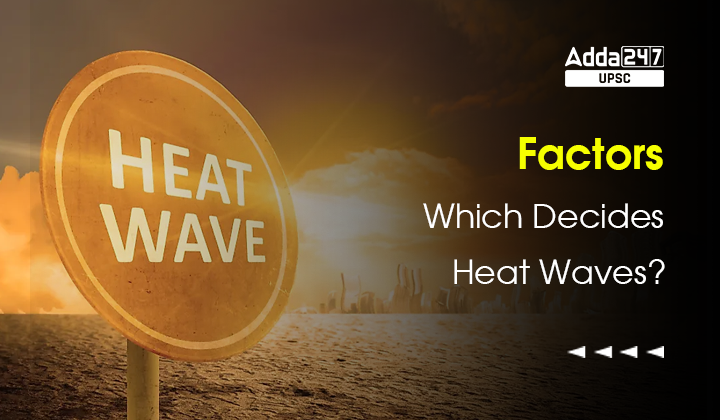Table of Contents
How Factors(Air Mass, El Nino, La Nina, etc.) Affecting Heat Waves In India?
In This Article, ”How Factors(Air Mass, El Nino, La Nina, etc.) Affecting Heat Waves In India?”, We Will Discuss: What is a heat wave?, Impact Of El Nino And La Nina Factors On Heat Waves In India?, How Heat Waves Are Formed?, How Does Air Mass Contribute To Heat Waves?, etc.
Context
- On February 21, the India Meteorological Department (IMD) warned that the maximum temperatures over northwest, west, and central India would be 3-5° C higher than the long-term average.
- On February 21 itself, the national capital recorded its third hottest February day (33.6° C) in more than five decades.
What is a heat wave?
- According to the IMD, a region has a heat wave if its ambient temperature deviates by at least 4.56.4°C from the long term average.
- There is also a heat wave if the maximum temperature crosses 45°C (or 37°C at a hill station).
- Heat waves are expected to become longer and more intense and frequent over the Indian subcontinent.
Impact Of El Nino And La Nina Factors On Heat Waves In India?
- The last three years have been La Niña years, which has served as a precursor to 2023 likely being an El Niño year.
- La Nina: La Niña is a world affecting weather phenomenon in which a band of cool water spreads east-west across the equatorial Pacific Ocean.
- Heat waves extended further south into peninsular India due to a north-south pressure pattern set up by the La Niña.
- El Niño: The El Niño is a complementary phenomenon in which warmer water spreads west-east across the equatorial Pacific Ocean.
- Heat waves tend to be confined to north and north west India in El Niño years.
How Heat Waves Are Formed?
Heat waves are formed for one of two reasons — warmer air is flowing in from elsewhere or it is being produced locally.
When It Is A Local Phenomenon?
It is a local phenomenon when the air is warmed by higher land surface temperature or because the air sinking down from above is compressed along the way, producing hot air near the surface.
When It Is A Outside Phenomeon?
A study published on February 20, 2023, in Nature Geoscience offers some clues as to how different processes contribute to the formation of a heat wave.
1. In spring, India typically has air flowing in from the west-northwest. This direction is bad news for India for several reasons. In the context of climate change, the Middle East is warming faster than other regions in latitudes similarly close to the equator, and serves as a source of the warm air that blows into India.
2. Likewise, air flowing in from the northwest rolls in over the mountains of Afghanistan and Pakistan, so some of the compression also happens on the leeward side of these mountains, entering India with a bristling warmth.
3. The air flowing in over the oceans is expected to bring cooler air, since land warms faster than the oceans (because the heat capacity of land is much lower). Alas, the Arabian Sea is warming faster than most other ocean regions.
4. Next, the strong upper atmospheric westerly winds that come in from the Atlantic Ocean over to India during spring control the near-surface winds.
5. Finally, the so-called lapse rate – the rate at which temperatures cool from the surface to the upper atmosphere – is declining under global warming. In other words, global warming tends to warm the upper atmosphere faster than the air near the surface. This in turn means that the sinking air is warmer due to global warming, and thus produces heat waves as it sinks and compresses.
How Does Air Mass Contribute To Heat Waves?
- Age of the air mass and how far it has travelled is a major factor affecting heat waves.
- The north-northwestern heatwaves are typically formed with air masses that come from 800-1600 km away and are around two days old.
- Heat waves over peninsular India on the other hand arrive from the oceans, which are closer (around 200400 km) and are barely a day old. As a result, they are on average less intense.
Heat Waves 2022: Definition, Causes, Impacts and Way Forward



 TSPSC Group 1 Question Paper 2024, Downl...
TSPSC Group 1 Question Paper 2024, Downl...
 TSPSC Group 1 Answer key 2024 Out, Downl...
TSPSC Group 1 Answer key 2024 Out, Downl...
 UPSC Prelims 2024 Question Paper, Downlo...
UPSC Prelims 2024 Question Paper, Downlo...





